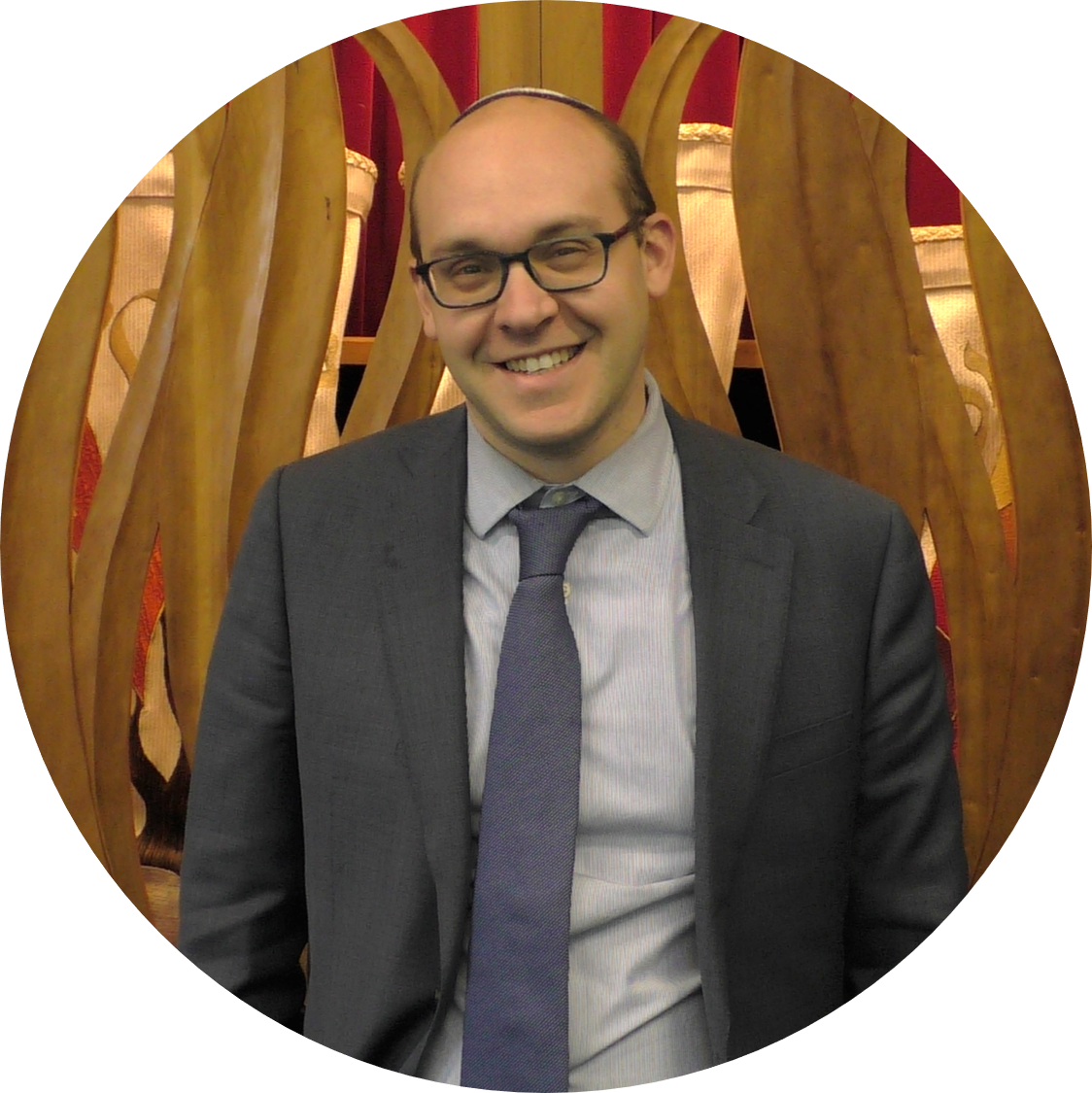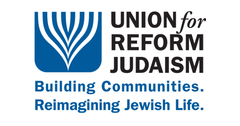Our Mission
Temple Ner Tamid is a welcoming, diverse, and musical Reform congregation where members connect with their heritage while thinking progressively about the present. The temple's mission is to inspire our members to make our community more curious, connected, and just.
All of our work is done in concert to create and sustain a vibrant community. Our diverse congregation embraces the values of lifelong learning; inclusive, participatory and inspiring services; and repairing the world. As we learn and teach, live and pray together, we embrace each other and our Judaism with joy.
The Vision
Strengthen TNT as a vibrant hub of worship, learning, discourse, and culture in ways that support Jewish values and traditions while engaging with the broader community.
Message from the Rabbi

When I reflect back on my first four years at Temple Ner Tamid, it’s the energy and vibrancy of the people in our community that stick out most. We are who we are because of the individuals that make up our congregation. Temple Ner Tamid is full of talented, passionate, engaged, thoughtful congregants who are hungry for meaning, excited for community, and ready to make their mark. It’s an incredible place to be a Rabbi.
Temple Ner Tamid is a place where congregants aren’t afraid to ask big questions about themselves and the world. They want to get deep with the big ideas of Judaism and never stop wrestling with those concepts. They show up at one another’s doors to celebrate, to comfort, or to mourn together, often with dinner in hand. Temple Ner Tamid is full of people who step up when called, whether it’s serving in leadership roles in the congregational community or volunteering in the wider community. Our congregants care about building a just and equitable world and see their Judaism as an important tool to do just that.
At our services, congregants sing. Not just a little. Our voices fill up the sanctuary because they know their voice matters and blended together, we can make wonderful music. It’s not uncommon for congregants to grab an instrument and join our band for services, or to volunteer to read Torah or deliver a short sermon on the Torah portion.
We are a congregation where members aren’t shy to bring their passions through the door. They offer advice and perspective and have amazing ideas of programs or speakers that would make our calendar more vibrant. Our members understand that they can be fully themselves and fully Jewish.
If you are already part of our community, we are glad you are here. If you are just finding us now, we would love for you to join our amazing congregation. We can’t wait to see how your unique gifts, your unique voice fit in with our community.
Our History
OUR ROOTS
The formation of Temple Ner Tamid ("Eternal Light") was the result of a truly historic decision. Reasoning that the needs of a Jewish community take precedence over individual ideological differences, the leadership of Temples B'nai Zion and Menorah came together to create a single synagogue committed to both liberal values and traditional expression.
Following months of meetings in private homes as well as the two congregations, a consolidation committee led by Julius Fisher (z"l) and Manny Rothenberg (z"l) helped to create Temple Ner Tamid. On a sunny day in June of 1980 the Torahs of Temple B'nai Zion were paraded down Broad Street and entered into the sanctuary of the newly dedicated Temple Ner Tamid.
Nevertheless, what Ner Tamid has become cannot be separated from the foundations laid for us by a century of devoted and visionary Jews. Their history is our legacy.
TEMPLE B'NAI ZION
The origins of Temple B'nai Zion ("Sons of Zion") are to be found in the formation of the Zionist oriented "Montclair-Bloomfield Camp of the Order of B'nai Zion" in 1915. It was soon after re-named "Bloomfield Camp No. 48." Within a short time the Bloomfield "Talmud Torah" was created and in 1917 the "Mother's Club" was organized with Dora Sax as its first president. The following year saw the acquisition of the community's first sefer Torah and the purchase of a small building on the Franklin Street site where, ten years later, Temple B'nai Zion's first and only synagogue structure would be built.
Temple B'nai Zion was re-chartered in 1926. It is not clear why this was done, although the presence of Congregation Shomrei Israel, a short-lived Bloomfield synagogue, in 1922 may indicate that the Bloomfield Jewish community was religiously split in the early 1920s. By 1926, however, B'nai Zion appears to be the major Bloomfield congregation with Abraham Lipton as the first president of the newly re-chartered Temple. Two years later the original building was razed and the following year, on June 9, 1929, the cornerstone for the new building was laid.
For the next fifty years Temple B'nai Zion demonstrated itself to be a significant Conservative congregation while maintaining its strong Zionist identity. Having persevered through the Depression of the 1930s and World War II, the post-war years witnessed a revitalization. 1947 saw the establishment of a "Consolidated School" between the Conservative congregations of Bloomfield, Montclair, Verona and Caldwell. Three years later, however, with an upsurge of enrollment, the B'nai Zion Religious School was reconstituted. The recipient of numerous highly-coveted "Solomon Schechter Awards," the religious school had close to 200 students in the late 1950s, while 1955 welcomed Bloomfield's first Jewish nursery school.
With the 1960s came serious questioning of relocation to a more suburban setting. No doubt this was, in part, due to the creation of Temple Menorah. Nevertheless, the trustees of Temple B'nai Zion chose to affirm its commitment to the downtown community of Bloomfield by refurbishing the Franklin Street building instead.
By the end of the 1960s it became clear that with major shifts in the Jewish population the religious school could not be maintained on its own. In September of 1970 the combined religious school of Temples B'nai Zion and Shomrei Emunah began. By the end of the 1970s the leadership of Temple B'nai Zion made an historic decision by "consolidating" with Reform Temple Menorah in an affirmation of the Jewish "community" of Bloomfield.
Information drawn from "The Story of our Temple" by Rabbi Phillip Sigal (z"l), 1969.
TEMPLE MENORAH
The earliest beginnings of Temple Menorah are rooted in Temple B'nai Zion. Popular legend has it that a number of families at B'nai Zion were uncomfortable over an emphasis upon tradition. Some accounts place the issue of mixed marriage as a central factor. A small group, led by Morris Wein, broke off to form a synagogue that was more responsive to liberal values. Joined by a number of unaffiliated families already living in the Bloomfield - Montclair - Clifton area, Temple Menorah was chartered as a member of the Union of American Hebrew Congregations in 1955. Irving Shakin was its first elected president.
The property for the new synagogue was a sheep farm and nursery located at Temple Ner Tamid's present site on Broad Street. It was purchased for the sum of $42,000. The farm house, which served as the congregation's building for five years, was restructured for a sanctuary in the living and dining rooms and classrooms were made from the upstairs bedrooms. During this period, Temple Menorah would hold High Holy Day services at the Watchung Presbyterian Church.
The early years of Temple Menorah saw rapid growth, particularly due to the post-war "baby boom" and the suburban re-location of the Passaic and Newark Jewish communities. 1960 witnessed two important landmarks for Temple Menorah: the construction of a synagogue building and the hiring of Rabbi Nathan H. Fish (z"l). During the 1960s Temple Menorah continued to grow with a religious school population that was well over 200 students, requiring classes to be held in split-sessions over Saturdays and Sundays.
With a new congregation in adjacent Clifton however, and the continued population shift further west, Temple Menorah's membership stabilized and began to gradually decline. As the decade of the 1970s came to a close, the leadership of Temple Menorah reasoned that the community of Bloomfield would be better served by a single congregation of combined strength than two separate smaller synagogues. Thus, in 1979, Temple Menorah and Temple B'nai Zion agreed to a plan of consolidation. Following the sale of the Temple B'nai Zion property, the newly formed Temple Ner Tamid was dedicated in the Temple Menorah building in June of 1980.
BETH SHOLOM REFORM TEMPLE
Beth Sholom began in 1959 when a group of Passaic & Clifton families organized to provide an alternate Jewish style to the existing traditional learning experiences at the Ahavas Israel and Temple Emanuel. They wanted, among other things, equal access to Hebrew and religious training for girls as well as boys. The congregation grew and the leadership began raising funds for a permanent home. Before they had a space of their own, they rented space in the Odd Fellows Hall on Lexington Avenue. The Torah was taken to the home of one of the founders each week for safekeeping.
Over the early years, BSRT had student rabbis serving the temple: Rabbis Sills, Secher and Soslow. When ordained, Edwin Soslow became the first full time rabbi. When he left to go to Cherry Hill, Rabbi Skolnik, another rabbi with an “s” last name, came in 1975 and remained our spiritual leader for 35 years.
BSRT had many cantorial soloists and students from HUC and other schools including JTS. It was at BSRT that the very first woman to be certified as a Cantor from HUC served as a student cantor and remained after that to make BSRT the very first temple in the country to have a fully certified woman cantor, Barbara Ostfeld.
Through a high level of volunteerism, BSRT specialized in self generated programs and activities creating a strong sense of community among the membership. Passover seders were cooked and prepared for members, guests and outsiders. There were countless hours of volunteerism for numerous outreach programs, and of course bingo! On the more fun side, there were barbecues, canoe trips and trips to Atlantic City!
BSRT suffered, as did other non-orthodox Passaic-Clifton congregations, from the demographic shift toward orthodoxy and the loss of families as their children became Bar or Bat Mitzvah. Unlike some of the other congregations which either went out of business or became orthodox, BSRT remade itself as a “regional” congregation and held off the entropy which trapped other temples. BSRT survived many years beyond the experts predictions through great effort and voluntarism, creative rental projects, and attracting members in near and less near areas. BSRT members joined Ner Tamid in 2010.

 Temple Ner Tamid
Temple Ner Tamid